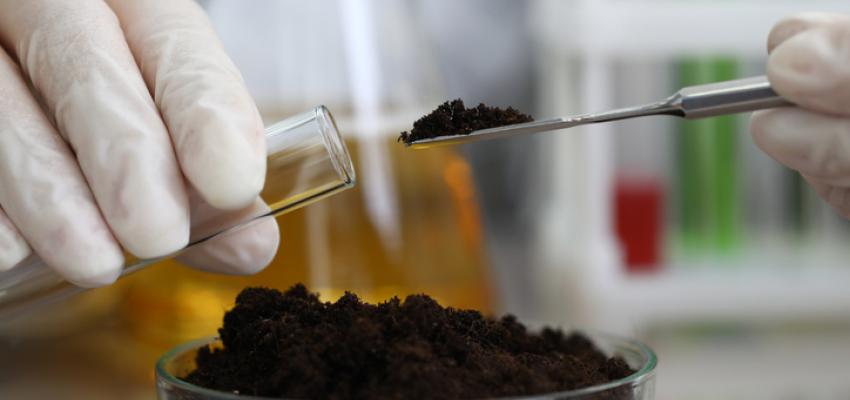Understanding Lawn Fertilizer Numbers: What Does N-P-K Stand For?

When you walk down the fertilizer aisle at your local garden center, you’re bound to see bags labeled with numbers like 10-10-10 or 20-5-10. But what do these numbers actually mean?
These numbers aren’t random—they’re a vital code that tells you exactly what nutrients your lawn will receive. Understanding these numbers can help you make better decisions for your lawn’s health, whether you’re caring for a cool-season lawn in the Tri-County Area of Northern Pittsburgh or tending to turf elsewhere in the country.
Let’s break down the mystery of fertilizer labels and explain how understanding the N-P-K ratio can help you grow a greener, healthier lawn.
Section 1: Decoding the N-P-K Ratio
The three numbers on a fertilizer bag represent the percentage by weight of three key nutrients:
- N = Nitrogen
- P = Phosphorus
- K = Potassium
So, a bag labeled 10-10-10 contains:
- 10% Nitrogen
- 10% Phosphorus
- 10% Potassium
If the bag weighs 50 pounds, that means it holds 5 pounds of each nutrient, with the rest made up of filler material to help spread the product evenly.
Section 2: The Role of Each Nutrient (N, P, K)
Nitrogen (N)
Nitrogen is the most important nutrient for lush, green grass. It promotes leaf growth and vibrant color.
- Fast-release nitrogen delivers a quick green-up, ideal for early spring.
- Slow-release nitrogen provides steady nutrition over time, helping reduce mowing frequency and minimizing the risk of burning your lawn.
Phosphorus (P)
Phosphorus supports strong root development, especially important for new lawns or after overseeding.
However, many regions—including parts of our Tri-County Area—restrict phosphorus use due to environmental concerns, such as runoff into waterways. That’s why it’s essential to perform a soil test before applying a phosphorus-rich fertilizer.
Potassium (K)
Potassium helps your lawn handle stress—from drought, cold, disease, or heavy foot traffic. It strengthens the overall plant, making it more resilient through the seasons.
Section 3: Choosing the Right N-P-K Ratio for Your Lawn
There’s no one-size-fits-all fertilizer. The best N-P-K ratio for your lawn depends on:
- Soil test results: These reveal current nutrient levels.
- Grass type: Different grasses have different needs.
- Season: In spring and fall, nitrogen is key for growth. In summer or before winter, potassium becomes more important.
Here are a few common ratios:
- 20-5-10: High nitrogen for quick green-up in spring.
- 10-10-10: Balanced for general maintenance.
- 6-0-20: Low or no phosphorus, high potassium for stress resistance in late summer or fall.
Also consider the time of year:
- Spring/Fall: Focus on higher nitrogen (N) to boost growth and color.
- Summer: Use a balanced or slow-release fertilizer to avoid stress and burning.
- Late Fall: Switch to a higher potassium (K) fertilizer to improve winter hardiness.
Learn more about the best time to fertilize in the Tri-County Area.
Choosing A Fertilizer For Tri-County Homeowners
To help homeowners in the Tri-County Area, here’s a guide to the most common cool-season grasses in our region and their general fertilization needs:
Kentucky Bluegrass
- Ideal N-P-K Ratio: 20-5-10 or 25-0-10
- Note: Benefits from higher nitrogen for lush growth; responds well to slow-release nitrogen.
Perennial Ryegrass
- Ideal N-P-K Ratio: 24-4-12 or balanced (16-4-8)
- Note: Grows fast and needs steady nitrogen, especially in spring and fall.
Fine Fescues
- Ideal N-P-K Ratio: 10-10-10 or 12-0-15
- Note: Prefers lower nitrogen; thrives with balanced or higher potassium mixes.
Tall Fescue
- Ideal N-P-K Ratio: 20-0-10 or 24-2-14
- Note: Tolerates heat and drought; appreciates moderate nitrogen and potassium for resilience.
Pro Tip: Grass species often appear in seed blends, so it’s common to have a mix. That’s why soil testing and professional evaluation matter.

Section 4: The Importance of a Soil Test
A soil test is an analysis that tells you what your lawn needs for healthy growth. It helps you choose the right fertilizer and avoid over- or under-applying nutrients.
Think of a soil test as your lawn’s personalized health report. It includes:
- pH level – which affects how nutrients are absorbed.
- Nutrient levels – like nitrogen, phosphorus, potassium, calcium, magnesium, and more.
- Organic matter content – especially helpful if you’re considering organic treatments.
How to Get a Soil Test
You have a couple of options:
- Do-it-yourself: Purchase a basic soil test kit from a garden center or online. These give a general overview and are good for spot checks.
- Professional lab testing: For the most accurate results, send a sample to your local agricultural extension office. In Pennsylvania, we recommend the Penn State Extension Soil Testing Lab. They’ll provide a full report with nutrient levels and fertilization recommendations.
- Through a Lawn Care Company: Many professional lawn care companies — including Custom Lawn Care Inc. — offer soil testing as part of their fertilization programs. We handle the sample collection, lab processing, and interpretation for you. Based on your results, we create a customized fertilization plan that delivers exactly what your lawn needs, when it needs it — no guesswork required.
Our team uses professional-grade lab services that often test for more nutrients than DIY kits, helping you avoid common lawn issues before they start.
Section 5: How Custom Lawn Care Inc. Takes the Guesswork Out of Fertilizer
At Custom Lawn Care Inc., we create customized fertilization plans tailored to the soil conditions and grass types of the Tri-County Area. Our trained professionals:
- Use soil test results to select the right fertilizer blend
- Apply nutrients at the proper time of year
- Prevent damage from over-application or incorrect ratios
Whether you want a lush green lawn or improved stress tolerance, we’ve got the right solution.
Understanding the N-P-K Ration
Fertilizer labels might look confusing at first, but once you understand the N-P-K ratio, you can make smarter choices for your lawn. That said, selecting the right fertilizer isn’t always simple—it requires knowing your soil, your grass, and the timing.
That’s where we come in. Let Custom Lawn Care Inc. take the stress out of fertilization with professional soil testing and expert application.
Ready to give your lawn the nutrients it needs? Contact us today for a custom fertilization plan that’s right for your lawn and your region.
